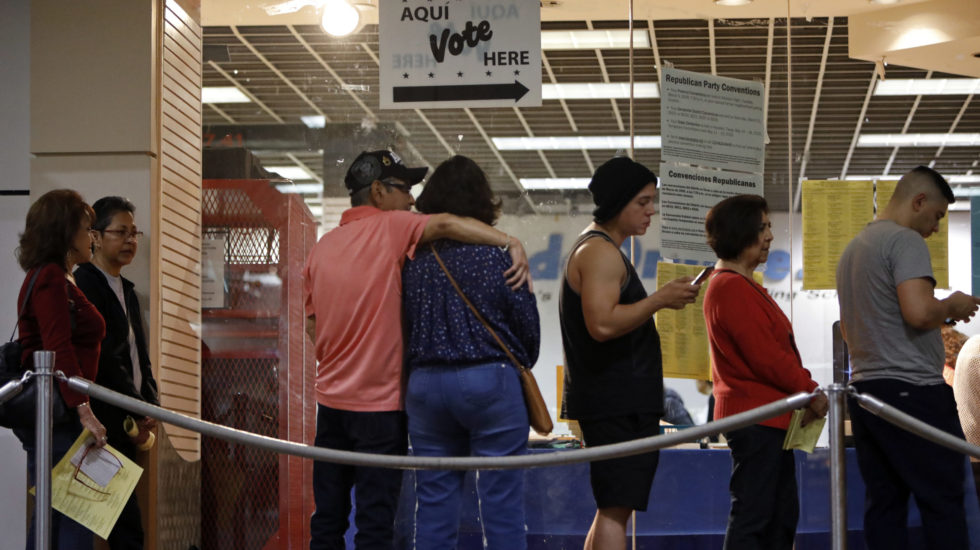Texas has eliminated hundreds of polling locations across the state, especially in minority areas, and here’s what happened. Voters in some of those areas had to wait hours in long lines to cast their ballot. Some waited as long as seven hours.
Hervis Rogers waited until 1:30am Wednesday morning to vote in Houston.
“Long wait times plagued the Lone Star State all day. Following a 2013 Supreme Court decision to nullify the “preclearance” practice put in place under the Voting Rights Act, at least 750 Texas polling sites have been shuttered. In the absence of advance federal review of the potential discriminatory effect of such decisions, some of the counties that saw the highest number of closures—including Dallas, Travis, and Harris counties—also have large Latino and Black populations. But without this essential component of the Voting Rights Act, it’s difficult to ascertain the effect these changes will have on communities of color.“
The Guardian has analyzed voting in Texas. The state has “chronically low voter turnout rates,” and the newspaper’s investigation found “the places where the black and Latinx population is growing by the largest numbers have experienced the vast majority of the state’s poll site closures.“
This would be an advantage to the GOP-dominated state.
“Some counties closed enough polling locations to violate Texas state law. Brazoria county, south of Houston, closed almost 60% of its polling locations between 2012 and 2018, causing it to fall below the statutory minimum, along with another county. In a statement, Brazoria county clerk Joyce Hudman said the closures were inadvertent, and that this would not happen again in 2020.“
The reason for fewer polling places is a move in Texas to create so-called vote centers which allows voters to cast their ballot at any designated site in their county. But The Guardian adds, “Texas state law allows a county that transitions to vote centers to operate with half as many locations as they would otherwise have needed under a traditional precinct-based system.“



